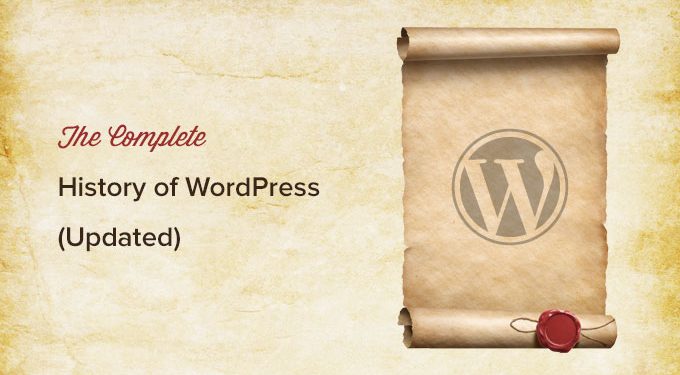19 years of WordPress from 2003 – 2022 (with Screenshots)
Do you want to know about the history of WordPress?
If you are starting a WordPress blog site or website today, after that you may understand that WordPress is a preferred internet site builder that powers more than 43% of all sites on the internet. But it didn’t start in this way.
In this article, we intend to have a look back at the background of WordPress to show you just how it progressed over time.
The story of WordPress tells us how open source neighborhoods work to make something so useful without compromising software application freedom. The WordPress project is driven by an area of committed designers, users, and also supporters. That’s why WordPress is cost-free.
WordPress started since the growth of an existing blog writing software b2/catalog was ceased by their major developers. In 2003, two customers of b2/catalog, Matt Mullenweg and also Mike Little, decided to construct a new system on top of b2/catalog.
They possibly didn’t know that they were about to begin a trip that would at some point profit countless users around the globe, which an entire market of hundreds of programmers, designers, writers, bloggers, and internet publishers would make their living off it.
On May 27, 2003, Matt revealed the accessibility of the first variation of WordPress. It was well-received by the neighborhood. It was based upon b2 Cafelog with significant renovations. The first variation of WordPress consisted of a brand-new admin interface, brand-new templates, as well as produced XHTML 1.1 certified templates. The article editor looked like this:

In May 2004, variation 1.2 of WordPress featured the plugin style. This enabled users and programmers to expand the performance of WordPress by composing their very own plugins and sharing them with the rest of the neighborhood.
As WordPress was opening itself to the neighborhood, something totally contrary was taking place in the blogging market during that time.
The marketplace leader in the blog writing tools industry at that time was Portable Type. They introduced brand-new licensing terms which were not such as by most of their individuals. This required most of their customers to search for a brand-new blogging system.
On the other hand, WordPress 1.2 presented itself as an ambitious job supplying customers with a mature, steady, easy, and also flexible platform with functions that rivaled their exclusive competitors. The adaption rate of WordPress increased with this release.
With the increase in the variety of customers, WordPress started getting better with the assistance and rate of interest in the area.
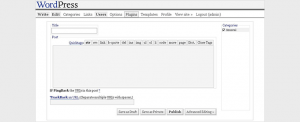
In February 2005, WordPress 1.5 featured Pages, comment moderation tools, a brand-new default theme Kubrick, and a totally new Motif System. Matt announced themes with these words:
In 1.5 we have produced an incredibly adaptable motif system that adapts to you rather than expecting you to adapt to it. You can have your entire blog gone through a single file, much like in the past, or you can essentially have a different layout for every single various category. It’s as much or as little as you want. We have actually also damaged usual site aspects like headers, footers, and sidebars into their very own data so you can make an adjustment in one area as well as see it anywhere instantly.
” Matt Mullenweg— Introducing WordPress 1.5″

In December 2005, WordPress 2.0 was launched with a brand-new admin dashboard. This brand-new admin area was a total overhaul of the management screens in WordPress.
It utilized JavaScript and DHTML to make a better interface where customers did not require to fill a web page to execute some basic tasks. Users were now able to include groups and also tags to messages without leaving the article editor or delete comments without refilling the comments screen.

The shiny new admin UI was not the only considerable enhancement in this launch.
It was the first release that included Akismet anti-spam plugin pre-installed. It additionally featured a WordPress data source backup plugin, wp-DB-backup, which was then dropped in 2007. Another very first for this launch was the intro of functions.php documents in the Motif System.
On March 1, 2006, Automattic, the firm founded by WordPress co-founder Matt Mullenweg, submitted the trademark registration for WordPress and WordPress logo design.
In 2008, a website design business called Delighted Cog signed up with the WordPress project to aid design a brand-new WordPress admin interface. A functionality research study was carried out to make the admin UI.
Throughout the year new functions such as shortcodes, one-click updates, and also integrated plugin setup were included in WordPress with various launches.
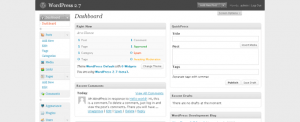
In June of 2010, Automattic, the company founded by WordPress co-founder Matt Mullenweg, transferred the ownership of the WordPress hallmark as well as a logo to the WordPress Foundation. This was a considerable minute in WordPress history because it made certain that WordPress will certainly continue to expand, and also is not depending on a company or a group of programmers to proceed with the task.
On June 17, 2010, WordPress 3.0 was launched. It was a significant action in the direction of WordPress as CMS. This launch presented several functions such as custom-made message kinds, better custom taxonomies, customized histories, header, menus, contextual aid on admin displays, and so on. WordPress MU project was merged right into WordPress core to create Multisite networks.
It also came with the Twenty Ten motif, which started the custom of a new default theme for each year.
In 2011, Blog post formats and admin bar made their method into WordPress.
Around that time, some really great WordPress plugins were constructing robust eCommerce systems on top of WordPress. This allowed WordPress users to produce online stores as well as build effective eCommerce internet sites using WordPress.
In 2012, style customizer, theme sneak peeks, and brand-new media supervisor were presented. These attributes tremendously aided new individuals in creating image galleries as well as previewing motifs before they change to a new motif.
In 2013, WordPress 3.7 featured the brand-new automated updates feature that permitted WordPress to automatically upgrade your website’s software application for small releases. The automated updates feature is very comparable to what the Google Chrome browser does. Several customers really did not like the feature, so we composed a tutorial on exactly how to disable automatic updates.
By now WordPress had already ended up being the most preferred CMS on the planet.
In December 2013, WordPress 3.8 was released which presented MP6, the brand-new WordPress admin interface. This new user interface was responsive and was aimed at providing a much better customer experience to users, on any type of tool or screen size.
On April 16, 2014, WordPress 3.9 was launched. It focused on improving the WordPress aesthetic blog post editor. Images can now be dragged and also gone down directly right into the article editor. Customers are now able to modify images best inside the editor and also see their gallery sneak peeks inside the editor. WordPress 3.9 additionally presented real-time widget previews, audio playlists, and several various other enhancements.
More improvements were made to WordPress core throughout the year with subsequent WordPress 4.0 as well as WordPress 4.1 releases.
2014 was also the first year when non-English downloads for WordPress surpassed English downloads.
In 2015, WordPress 4.2, 4.3, and 4.4 were launched. These releases focused on enhanced localization, emoji assistance, theme customizer, and putting down the framework for the WordPress REST API.
In the very same year, WooCommerce, the most prominent WordPress eCommerce plugin was obtained by Automattic (the business started by WordPress co-founder Matt Mullenweg).

In 2016, WordPress 4.5, 4.6, and also 4.7 were released. Each release presented some new functions and also improvements. One of the most notable changes throughout the year were streamlined updates for plugins and styles, content healing by using web browser storage space, as well a personalized CSS feature for style customizers. By the end of the year, WordPress.org announced actively sustaining HTTP.

In 2017, WordPress 4.8 and 4.9 were launched. These releases brought a number of new default widgets to include audio, video clip, images, gallery, abundant text, and HTML. These launches likewise prepared for the brand-new WordPress block editor.
In 2018, WordPress 5.0 was released with a brand new editing and enhancing experience. The new WordPress block editor task was codenamed, Gutenberg. See our full Gutenberg tutorial– WordPress block editor.

The block editor stayed the focus of WordPress advancement as the area moved towards extensive adaptation.
In 2019, WordPress began carrying out the Site Wellness project into the core. With WordPress 5.1 and 5.2, Site Health and wellness started revealing customers’ alerts when an older PHP variation is discovered.
It likewise included security for White Display of Fatality by enabling users to visit securely in case of a vital error and then repair it from within the WordPress dashboard.
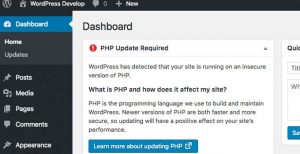
In 2020, the WordPress community dealt with unanticipated difficulties because of the breakout of a worldwide pandemic. WordCamp occasions around the globe were terminated and the area organized meetups virtually.
The good news is, that a lot of WordPress neighborhood members and also programmers knew and were also used to the remote job. The development proceeded and three significant WordPress releases (5.4, 5.5, as well as 5.6) appeared.
Amongst many renovations, the job began on the Complete Website Editing and enhancing experience, automated updates were included, as well as obstruct directory site, block patterns, and lazy loading pictures were introduced.
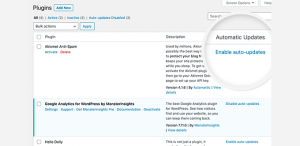
In 2021, work was removed on a complete website modifying attributes with WordPress 5.7 as well as 5.8. A brand-new design templates feature was presented in addition to a number of site-wide blocks to conveniently produce site-wide layouts in WordPress.
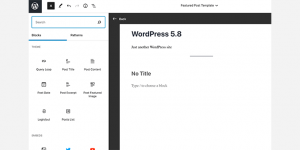
Over the last few years, WordPress has continued to enhance the block editor in an effort to use a complete website editing and enhancing service.
A lot of progress has been made in this field, but currently, we still advise viewers to use drag & decrease WordPress web page home builder instead for more style control.
In 2022, WordPress will continue to be concentrated on improving the full website modifying experience. Extra website-changing blocks are coming in WordPress 5.9, and lots of WordPress themes will start offering a far better website-changing experience based on the block editor.
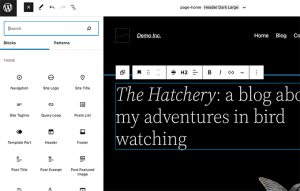
What’s Following for WordPress?
WordPress is continually progressing to address the requirements of the countless web publishers around the globe. The direction of WordPress directly depends on the demands of individuals. We can safely presume that it will certainly continue to encourage people all over the world to develop remarkable internet spaces.
We hope this write-up aided you to comprehend the background of WordPress. You might likewise want to see just how WordPress works behind the scenes (infographic) as well as what are the very best WordPress plugins that every internet site should use.
If you liked this short article, after that please register for our YouTube Network for WordPress video tutorials. You can additionally find us on Facebook and Twitter.


